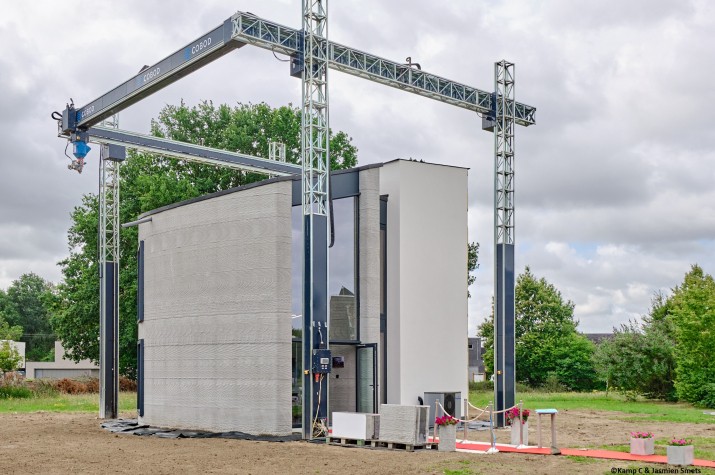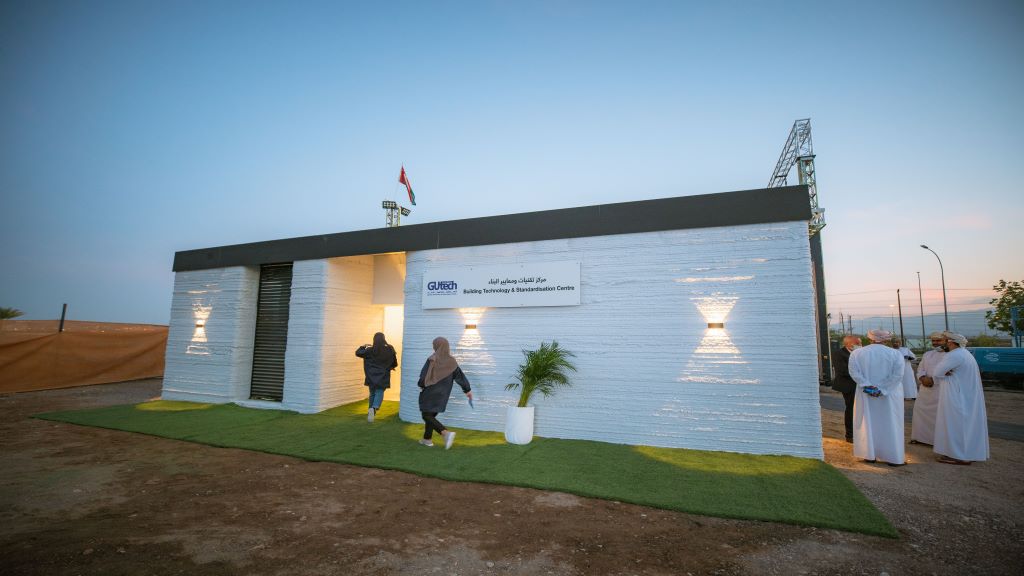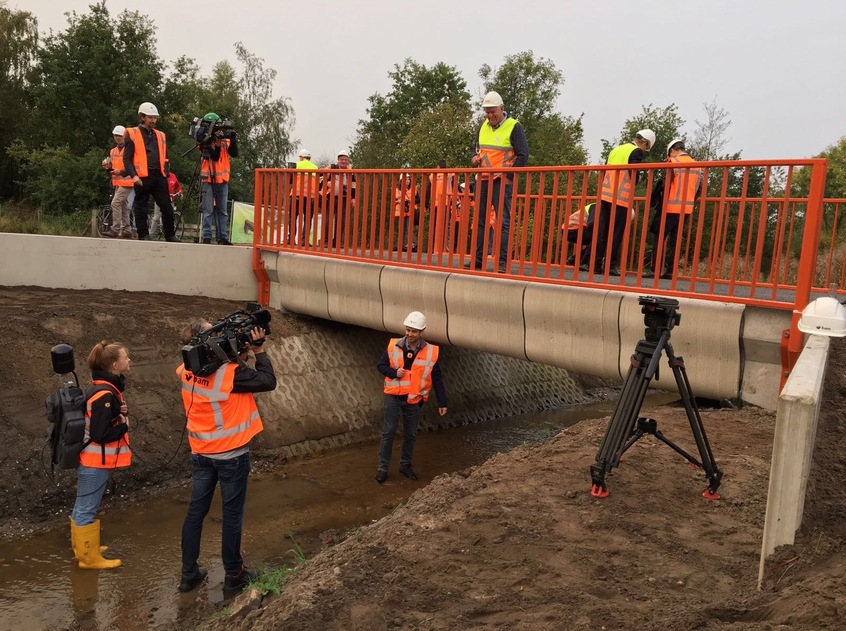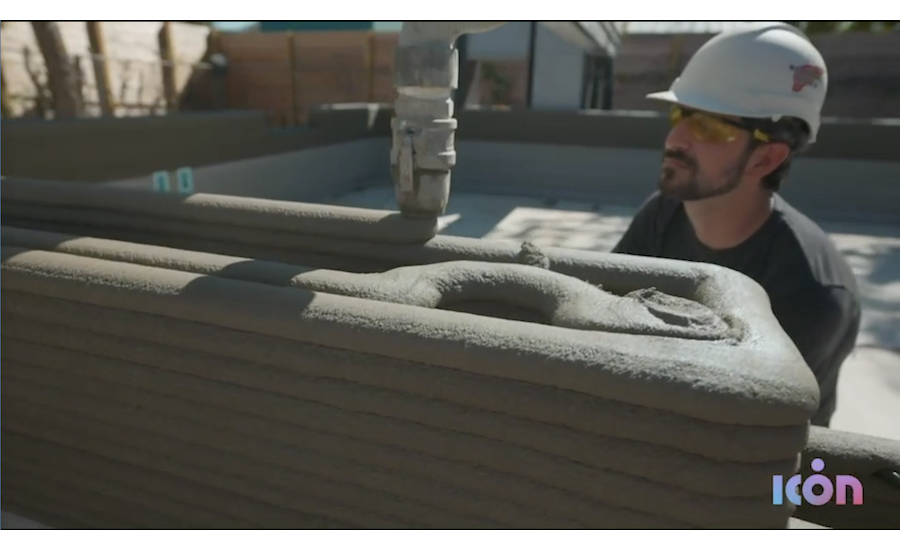Kamp C completes first two-story house 3D printed on-location for C3PO project
Written by: Victor Anusci
Publish Date: July 19, 2020


A two-story house was 3D printed at Kamp C, the provincial center for sustainability and innovation in construction, in Westerlo, Belgium, using the largest 3D concrete printer available. The house, part of the C3PO project, has an area of ninety square meters and was 3D printed in one piece with a fixed printer. It’s the first such project in the world.
“It’s unique that we printed the house in one piece with a fixed concrete 3D printer,” said Emiel Ascione, project manager at field C. “The houses that have already been printed all over the world have only one floor and are often printed in parts in a factory and later assembled. We printed the entire building envelope on-site. ”
The house was printed as part of the European C3PO project with support from the ERDF (the European Regional Development Fund). With this result, the project partners want to put pressure on the construction sector to implement 3D printing of concrete.
The construction sector is facing many challenges: consumption of materials and energy must be reduced, as well as CO2 emissions. Waste must be reduced along with meeting the increasing demand for high-quality and affordable housing solutions. Kamp C believes that new technologies, such as 3D concrete printing, can provide an answer to these issues.
Three times stronger
The printed house is three times stronger than a high-speed brick house. “The compressive strength of the material is three times higher than the classic quick-build brick,” explained field manager Marijke Aerts C. This first house is a test building and will be examined to confirm that this strength can be maintained over time.
In addition to fibers contained in the concrete, only minimal shrinkage reinforcement was used. The printing technique makes concrete formwork unnecessary. This saves about sixty percent of material, time and money. For example, a house could be printed in two days in the future. If you add up every day of printing, the house at Kamp C was printed in just three weeks.
The house is a demonstration building that wants to show the techniques and possibilities of 3D printing as much as possible. “An overhang has been printed, there are strongly curved walls, there are different types of walls, … Solutions for the classic construction buttons have also been introduced so that they are completely free of cold bridges”, explained Ascione. “The house will be expanded into a low-energy house equipped with every comfort: underfloor and ceiling heating, solar panels for special facades and installed heat pump and green roof.”
Project C3PO
The C3PO project aims to accelerate the introduction of this innovative technique in Flanders. Eight partners, both from the scientific and commercial world, have joined forces: Beneens, ETIB / CONCRETE HOUSE, Van Roey Group, Thomas More, Trias architects, Ugent and Vicré. Saint-Gobain Weber also participates.
With the C3PO project, “Co-creation: 3D printing with companies”, the province of Antwerp wants to accelerate this innovative technique in Flanders. With additional financial support from Europe, 1.6 million euros have been invested to install the necessary printing infrastructure in Westerlo’s Kamp C. This allows the construction industry to experiment, test prototypes and build 0 series.
The construction sector is often seen as a dirty and unattractive job that physically requires a lot from employees. Work is slow with traditional construction methods. However, the construction sector is changing rapidly and evolving into a high-tech environment: with a 3D printer, modern production technology is integrated into the construction process.
Government, business and scientific organizations have joined forces with the C3PO project. These eight organizations from the scientific and commercial world include the University of Ghent, Thomas More Hogeschool, Van Roey, Beneens, Trias Architecten, ETIB nv / CONCRETE HOUSE and ViCre.
From the ERDF C3PO project (“Co-creation: 3D printing with businesses”), partners can count on 668,320 euros of support from Europe. The project is part of the GTI Kempen (GTI stands for targeted territorial investments, an integrated strategy for a specific area, which combines different European funds and programs). The provincial government of Antwerp has made an additional investment of 723,495 euros. The province wants to ensure that the sector takes into account the possibilities of high technology and that more and more is thought about sustainable construction.
To stimulate 3D printing in the construction sector, all partners were brought together for the maximum exchange of knowledge. This project should inspire and convince them to participate in the necessary changes. The construction sector, education and scientific institutions need a place where they can experiment. This happens to field C: there is a lot of experimentation with this construction technique. All interested companies, research and educational institutions are welcome to try the 3D concrete printer. Tests conducted last year in preparation for the home press help clarify technical issues.
About the Author
This article is written by Victor Anusci
Read the original post here.




